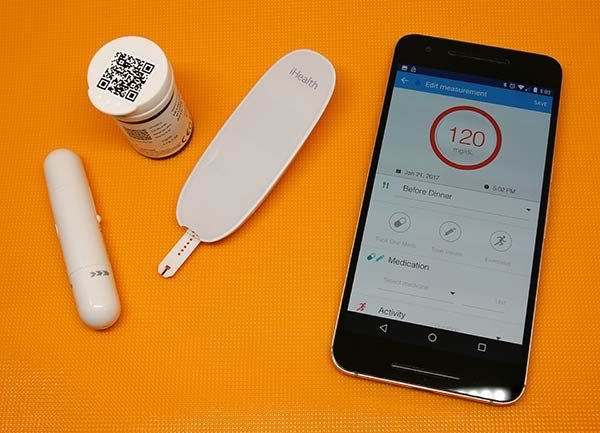
In 2004 I was diagnosed with diabetes. Yay me! I immediately cut out as much sugar as possible from my diet and have been lucky enough not to have to go on insulin or other medications to manage the condition. Just using diet and exercise doesn’t mean I ignore the fact that I’m a diabetic though. I still need to keep track of my blood glucose readings by using a blood glucose monitor and recording the results in a notebook. When I was offered the iHealth Smart Gluco-Monitoring System to review, I was excited because it pairs with an app to automatically record results. Let’s check it out.
What is the iHealth Smart Gluco-Monitoring System?
The iHealth Smart Gluco-Monitoring System is a Bluetooth blood glucose meter that uses sensors to measure the amount of sugar in a drop of blood to provide the user with a mg/dL blood sugar level.
What’s in the box?
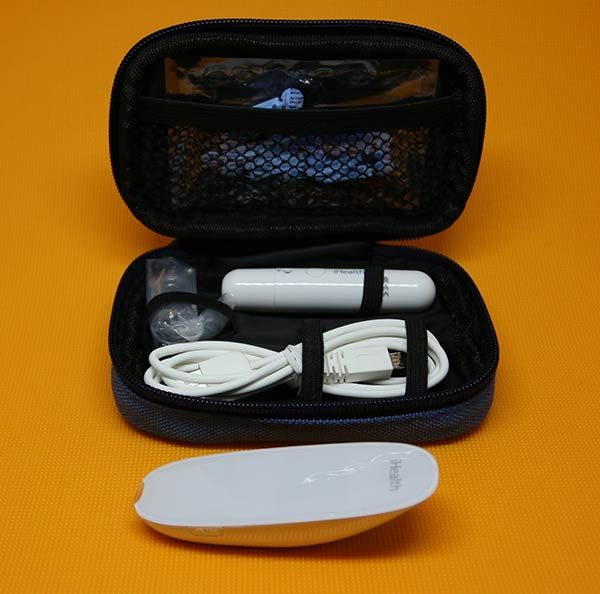
iHealth Smart Gluco-Monitoring System
iHealth Lancing Device
Lancet x10
Clear Cap for Alternate Site Testing
USB Charging Cable
Travel Case
Owner’s Manual
Quick Start Guide
Design and features
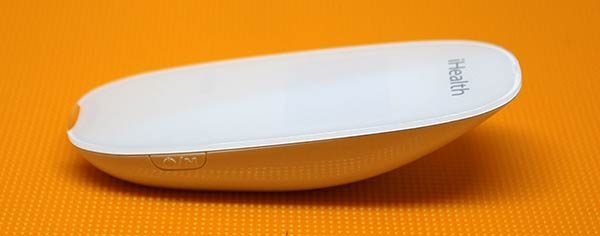
The iHealth Smart is a small oval shaped device with a power button / memory recall button on the right side. Holding the power button for 3 seconds will turn the unit on. Subsequent presses of the button display previous blood sugar level readings. The iHealth Smart can store up to 500 readings.
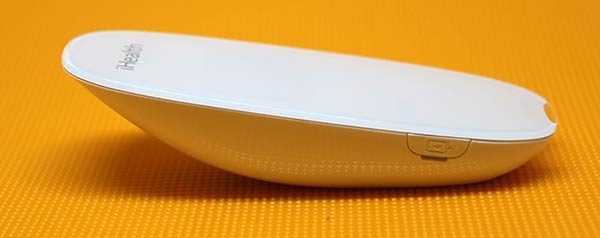
The opposite side of the meter has a micro USB port that is used to recharge the device’s batteries.
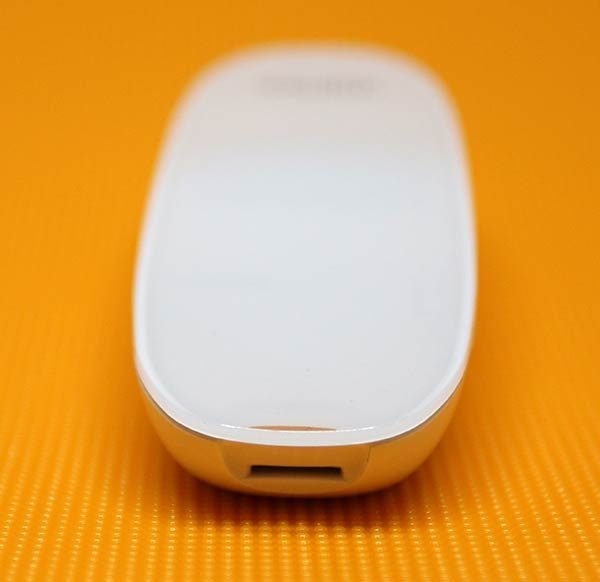
On the front end of the iHealth Smart is a slot for the test strip.
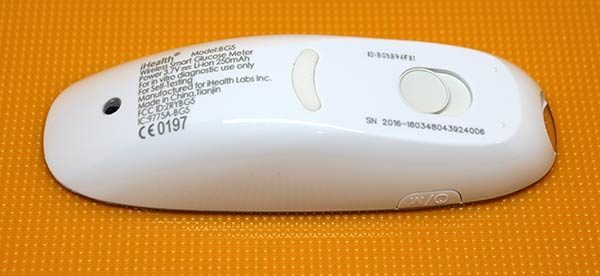
On the bottom is a test strip eject button.
How do you use the iHealth Smart Gluco-Monitoring System
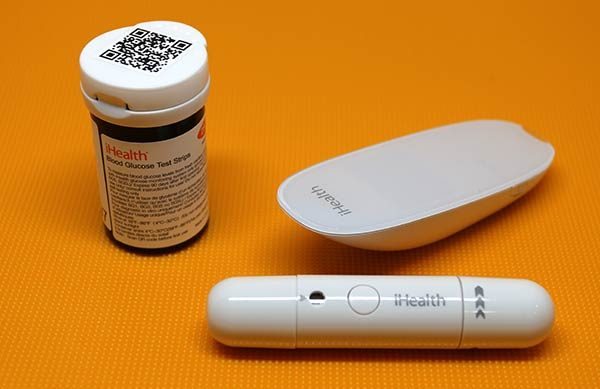
You need three items to test your blood sugar level with the iHealth Smart. You need the iHealth Smart device, the lancing device and test strips.
The test strips for the iHealth Smart are sold separately in 50 strip vials for around $12. Each test uses one strip, so vials of strips is a reoccurring purchase.
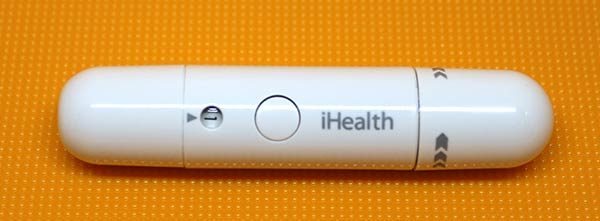
The lancing device is a chapstick-sized tube that has a spring loaded mechanism that pokes your finger tip to draw a drop a blood for the test.

One end of the lancing device comes off to load a lancet. The cap snaps back in place and can be twisted to modify the poking depth (ouch). I kept it at the first level. The opposite end of the lancing device twists to prime the lancer.
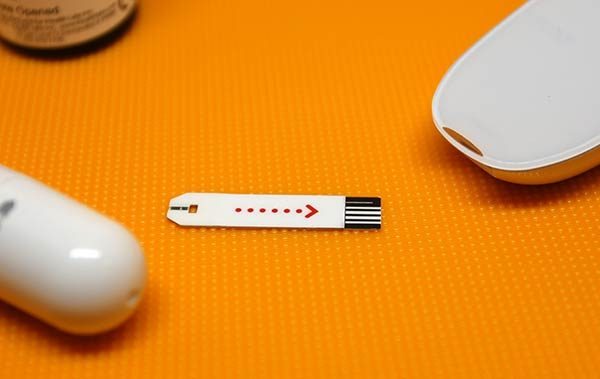
The test strip has a striped in which is what is inserted into the iHealth Smart. The other end is where the drop of blood goes. To test, you just insert the strip in the meter, use the lance to draw a drop of blood, touch your finger / blood droplet to the end of the test strip and wait a few seconds to see the test result.
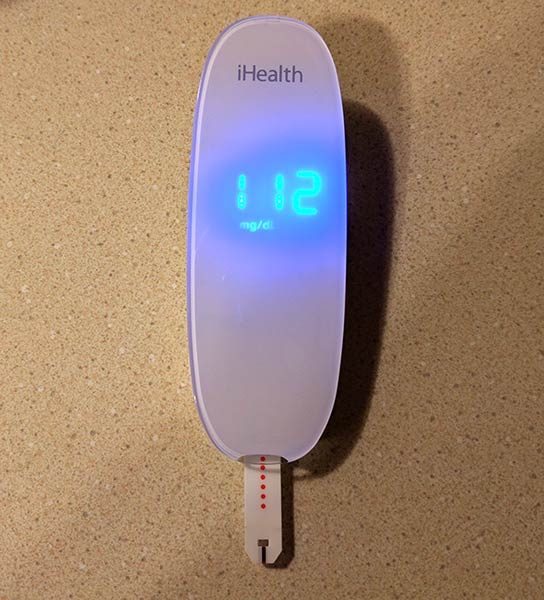
I did some side by side test with my non-connected glucose meter and the results were very close.
You can use the iHealth Smart meter by itself since it stores up to 500 test results, but when paired with an iOS or Android device, it can provide an easier way to view results and trends. The app will also allow you to export readings to a CSV or Microsoft Excel file. The app will also remind you when it’s time to perform a test and reorder strips.
Each time you take a test, it will guess if it’s before a meal or after a meal. You can edit the info about each test if it doesn’t guess correctly.
Each test will show as red, green or yellow. Red means a high mg/dL blood sugar level, green is a normal mg/dL blood sugar level and yellow is a low mg/dL blood sugar level. These levels have default values as per the American Diabetes Association. If desired, you can modify the target range levels in the app’s settings.
You can view trends graphs that can help you see when your blood sugar levels are out of range most often so that you can adjust your diet or talk to your doctor.
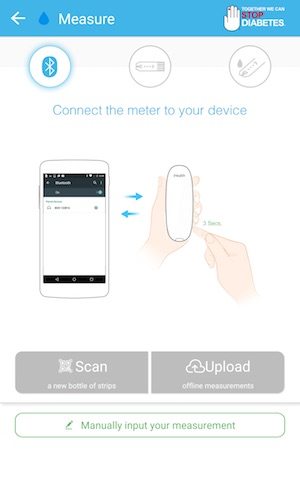
If you don’t have the mobile device with the app when you need to test your blood sugar level, you can sync readings later through the app.

Other information such as medications, activities, carbs in grams that you ate before the test, notes and even a place to record a message with your voice.
Concerns and issues
I like that the meter is not overly expensive, but it is concerning that the device will become obsolete if iHealth goes out of business and no longer offers the test strips since this blood glucose meter can not use other brands of strips. That said, iHealth Labs has been in business for 6 years.
I also noticed that there’s no way to add another user to the app, so if you have a family with more than one diabetic, you’ll have to buy two iHealth Smart devices.
What I like
The iHealth Smart Gluco-Monitoring System is simple to use and the fact that it uses a rechargeable battery means that you won’t need to buy a new of batteries when it gets low.
I also like the easy to read history and trends data which I can show or email my doctor by exporting to a spreadsheet.
Final thoughts
The iHealth Smart Gluco-Monitoring System is my first experience using a connected blood glucose meter and so far I see no downsides to using a device like this. The price is low enough to make the purchase of this device attractive if you’ve been needing to replace an old-school glucose meter.
Source: The sample for this review was provided by iHealth. Please visit their site for more info and Amazon to order.

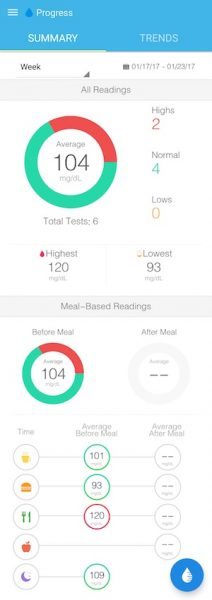
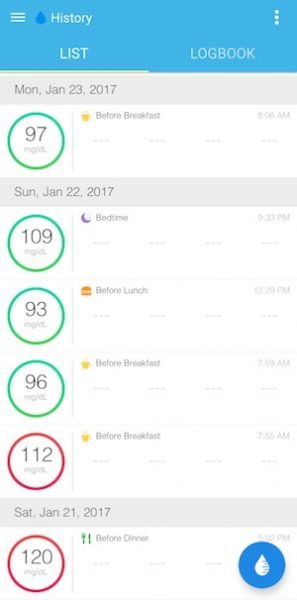



Gadgeteer Comment Policy - Please read before commenting
I also have a low tech “connected” meter. I read my values on my One Touch meter and then enter them into the Health app on my Samsung phone. I also know that the test strips require almost no blood (how much does this one require) and I will be able to get my test strips forever.
In order to do statistical analysis on my blood data, I enter the values into an Excel spread sheet every month.
Works for me.
The test strips with the iHealth Smart don’t require much blood either. Less than my old OneTouch.
One more comment. My Freestyle Lite test strips require only 0.3 ul of blood. The iHealth meter test strips require 0.7 ul of blood. That is a big difference.
I think that I will stick (literally and figuratively) with what I am using.
I’m utterly shocked at the price of this meter and strips. It’s not uncommon for companies that make the meters to discount them significantly, but a bottle of 50 strips usually costs around $50 each! For a diabetic who should be testing 4 times a day (guilty as charged), the cost for a month’s supply is quite high. This, I’ve always thought, is where the company makes its money.
I’m off to order one of these. It will make my doctor happy.
Let me know your thoughts on it 🙂
Like many others, I have tried a host of glucose meters and always tried to base my purchase decision on the cost of test strips. iHealth strips are the lowest cost I’ve found and I have them set up as a subscription from Amazon. This meter connects to my smartphone quickly via Bluetooth and it is easy to send the data in a spreadsheet to provide to my Endocrinologist. This is a great system and certainly worth a serious look when deciding on a blood glucose monitoring system. Great review!
Thanks Michael! There’s only one thing I didn’t think to try/cover in the review that maybe you’ll have some info on for us. I know the documentation says that the battery should last for about 200 tests, but do you know if the meter can charge AND test at the same time?
Not sure that’s really necessary to charge and test at the same time. I have a meter now that needs periodic recharging via USB; all I do is plug it in after a bedtime test and it’s charged in time for the morning.
You definitely don’t need to charge it every night. I’m just thinking if I go to do a test one morning and it’s dead, can I plug it into USB and take a test at the same time. I’m guessing yes. I just haven’t verified it.
Julie, I tried several tests and I could not get the meter to work while being charged. It will connect via Bluetooth while being charged but will not let you sample. That said, the battery life is so good (and power consumption so low) that I usually only charge the meter once a month on average. I rarely use the meter without connecting to my phone but I do charge overnight before I travel just in case I need to use the meter without connecting to my phone.
Thanks for letting me know!
I have this device also. I found that the readings varied significantly from my current OneTouch meter. I have an appt with my Endo to compare it to their meters and figure out who’s right.
It has several other issues I find are deal breakers for me. First of all you have to code the vials – I thought that went out with parachute pants. 😎 I have had to code strips for 10 years. Plus since the application keeps track of when you start using a bottle and each strip (and a bottle has only 25 strips) you run out pretty fast and you can’t consolidate bottles.
The lancet device is awful. I couldn’t use it more than 2x before I went back to my trusty OneTouch unit.
On the plus side the application is excellent – you don’t even need to use the Glucose Meter – you can enter values manually which is what I’ve been doing going back and forth between 2 devices. The device IS (YAY!) HealthKit compatible so your readings are automatically transferred to Health app and you can see you glucose levels along with all of your other HealthKit info in one nice dashboard. You can enter lots of other info as well – like meds you’re taking, insulin (it even has a list of popular Insulin varieties), food and other info if you’re really tracking your health in this manner.
I really wanted to like the device as I’m tired of using the awful software that comes with OneTouch devices but the annoyance of having small vials of strips as well as the software restricting how you use the strips was very annoying and kind of a deal breaker for me.
As for interacting with my Endo it’s really irrelevant because they have software that seems to be able to pull readings out of any meter I show up with. They weren’t interested in spreadsheets or data files. Oh well.
Coding the vial isn’t a big deal, you just scan it with the app. It takes all of 2 seconds. 🙂
I agree that the lancet device but I thought it was just me so I didn’t say anything in the review. I think it bruised my fingers because they were sore for a day or two. But since I hadn’t been checking my blood as often as I should, I figured it was just due to excessive pokage.
the result is not accurate, there is a difference of 40 mg/dl sometimes 20md/dl with other devices.
yesterday the igluco gave me 20mg/dl as result. strange.
besides that, the App requires that I scan the barcode to work, but the strips are NO Coding
I’m starting to think the same thing about the iHealth accuracy. I hadn’t used this device since I posted the review and started using it again a month or so ago. My blood sugars are usually no more than 101 in the morning when I’m fasting for 12hrs. The iHealth was showing that my blood sugar was 126. I was pretty freaked out about it and started testing it each morning and was getting the same elevated readings. So I ordered a new vial of strips and same thing. But then I checked my blood with an older generic tester with non-expired strips and the reading was back in line with what I normally show. I then had an A1C and my reading was 5.7 which was lower than the last one I had. The nurse said she’d be more likely to go off the A1C than the daily readings, so I put the iHealth back in the drawer and won’t worry about it.